Henan Hou Sheng Biotechnology Oil Production Steel Structure Plant This project is the project of Luoyang Peony Seed, Walnut, Yuanbao Maple Seed Oil Processing Industry Integration Project, located in Luoning County, Luoyang City, Henan Province, with a total construction land area of 93871.01 square meters and a total construction area of 68,291.24 square meters.
It is mainly a factory building with independent foundation and portal frame. There are 14 single units in this project as follows: 4# pressing workshop, 5# shelling workshop, 10# refining workshop, 7# leaching workshop, three office buildings in Block B, tank foundation, 4# raw material warehouse, 6# meal warehouse, 9# boiler room, 1# walnut processing workshop, 2# office building, 3# packing workshop. One floor above ground, part of the workshop is two floors above ground, no basement.
An oil processing steel structure workshop is a specialized facility designed for the fabrication, assembly, and installation of steel structures used in oil processing plants and related infrastructure. These structures are crucial for the oil and gas industry as they provide the framework for various processing units such as refineries, chemical processing units, and storage tanks. The steel structures in this workshop are tailored to meet the specific requirements of the oil industry, which involves handling heavy machinery, high pressures, and hazardous materials.
1. Design & Engineering for Oil Processing Structures
The design phase for steel structures in an oil processing plant requires careful consideration of several factors:
Load and Stress Analysis: Steel structures must be designed to support heavy equipment, such as reactors, separators, and compressors, which require precise load-bearing calculations.
Corrosion Resistance: Since oil processing plants deal with corrosive substances, steel structures need to be coated or treated to resist corrosion, especially in areas where exposure to chemicals, high temperatures, or moisture is common.
Safety and Compliance: The design must meet strict safety standards, such as those set by organizations like OSHA (Occupational Safety and Health Administration), API (American Petroleum Institute), and other regulatory bodies. The structures must be able to withstand seismic, wind, and thermal loads, particularly in regions prone to natural disasters.
Space and Flexibility: Oil processing plants often need to accommodate complex piping, electrical wiring, and mechanical systems. The steel structure design must allow for flexibility in installation and future expansion.
2. Raw Material Selection
The materials used in the fabrication of steel structures for oil processing workshops are typically chosen based on strength, durability, and resistance to corrosion. Some of the common materials used are:
Carbon Steel: Used for most structural components due to its high strength and cost-effectiveness.
Alloy Steel: In certain parts of the structure exposed to high temperatures or corrosive substances, alloy steels with special coatings may be used.
Stainless Steel: Used in sections where corrosion resistance is critical, such as in contact with oils, gases, or chemicals.
Galvanized Steel: Steel components are sometimes galvanized to provide an extra layer of corrosion resistance, particularly for structures exposed to moisture and chemicals.
3. Fabrication Process
The fabrication of steel structures in an oil processing steel structure workshop involves several key stages:
Cutting
Plasma and Laser Cutting: Large steel plates and beams are cut to precise shapes and sizes using plasma or laser cutting techniques. These methods allow for high precision and reduced material waste.
Sawing: For less intricate cuts, traditional sawing methods may be used.
Bending and Rolling
Steel Bending: Steel components like beams and columns may need to be bent into specific angles to fit the design requirements of the oil processing facility.
Rolling: Steel plates can be rolled to create curved sections, such as for storage tank shells, piping supports, or custom-shaped components.
Welding
Weld Preparation: The surfaces of the steel components are cleaned and prepared for welding to ensure good adhesion and prevent contamination.
Welding Techniques:
MIG Welding: Commonly used for welding thin to medium-thickness steel components.
TIG Welding: Used for precise, high-quality welds, especially in critical joints or areas requiring high strength.
Stick Welding: Used for welding thicker steel components and in outdoor environments.
Welding Inspection: After welding, non-destructive testing (NDT) methods such as ultrasonic testing or X-ray inspections are used to verify the integrity of welds and joints.
Drilling and Punching
Hole Drilling: Steel components are drilled to create holes for bolts, rivets, or other fasteners. This is particularly important for assembling large frames or for bolting structural elements.
Punching: In some cases, components may require punched holes for connecting steel pieces, especially in large-scale assemblies.
4. Surface Treatment
Given the environment in which the oil processing structures will operate, the steel must undergo various treatments to ensure its longevity and durability.
Shot Blasting
The steel surfaces are cleaned to remove rust, dirt, and mill scale through shot blasting. This prepares the surface for coating and ensures better adhesion.
Coatings
Anti-Corrosion Coatings: Steel components are coated with a corrosion-resistant material, such as an epoxy or polyurethane paint, to protect the steel from harsh chemicals and environmental exposure.
Galvanizing: In some cases, components are hot-dip galvanized to protect them from corrosion, especially for outdoor or exposed steel parts.
Fire-Resistant Coatings: In some oil processing workshops, steel structures are coated with fire-resistant materials to meet safety regulations and to protect the structure from high heat or fire hazards.
Painting
Final Paint Coating: After surface preparation and application of anti-corrosion coatings, the final paint layer is applied. This layer provides an additional protective barrier and enhances the aesthetic appearance of the steel structure.
5. Assembly and Pre-Installation
Before the steel components are sent to the oil processing site, they are often pre-assembled in the workshop to ensure proper fit and alignment.
Sub-Assembly:
Modular Assembly: Large steel structures are often pre-assembled in smaller sections or modules in the workshop. These sub-assemblies are then inspected to ensure proper alignment and structural integrity before being disassembled for shipping.
Fit-Up and Inspection:
The components are checked for dimensional accuracy, proper alignment, and fitment. Any discrepancies are corrected before the structure is shipped to the site.
6. Logistics and Transportation
Transporting the steel components to the oil processing site requires careful planning. Steel structures for oil processing workshops are typically large, heavy, and require special handling.
Packaging and Securing:
Steel components are packed securely to prevent damage during transport. This may involve crating, banding, or shrink-wrapping. Heavy items may be placed on specialized pallets or containers to ensure they are stable during transit.
Transport Methods:
Truck Transport: Flatbed trucks or trailers are used to transport steel components to the construction site.
Rail Transport: In cases where the workshop is located near rail networks, railcars may be used to transport large or heavy steel pieces.
Maritime Shipping: For international projects, steel structures may be shipped by sea, especially for large projects like offshore oil platforms or large-scale refineries.
7. On-Site Erection and Installation
Once the steel components arrive at the oil processing site, they are assembled and erected. This process typically involves:
Cranes and Heavy Lifting Equipment: Large cranes or hoists are used to lift and position the steel structures into place.
Welding and Bolting: On-site welding or bolting is used to join the structural components.
Alignment and Final Inspections: After assembly, the structure is aligned, checked for accuracy, and inspected to ensure it meets all specifications.
8. Safety Considerations
Given the hazardous environment of oil processing plants, safety is a top priority during the fabrication and installation of steel structures:
Fire and Explosion Hazards: Strict protocols are followed to avoid sparks or open flames, especially when welding or cutting steel.
Structural Integrity: Regular inspections and quality checks ensure that the steel structure can withstand the heavy loads and environmental stresses it will face during operation.
Employee Safety: Workers involved in the fabrication and installation of steel structures are equipped with appropriate personal protective equipment (PPE), and safety procedures are in place to minimize risk.
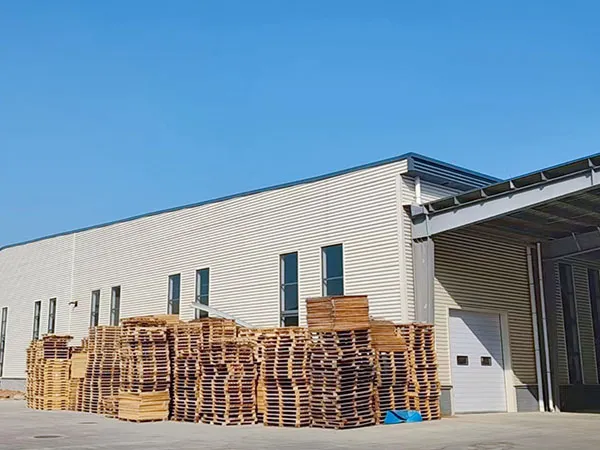
Zhuoyang Chundu Standardized Factory Construction Project
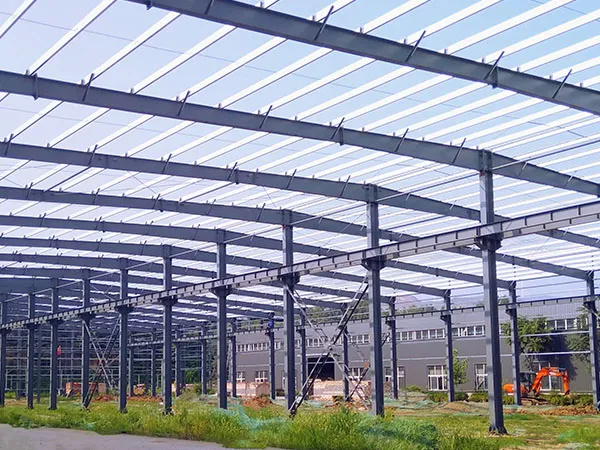
Yiyang Huicheng Steel Structure Factory Construction Project

Seed Potato Storage Center Project of Lingshang Selenium Potato Science and Technology Innovation Park in Yaling Town, Yichuan County
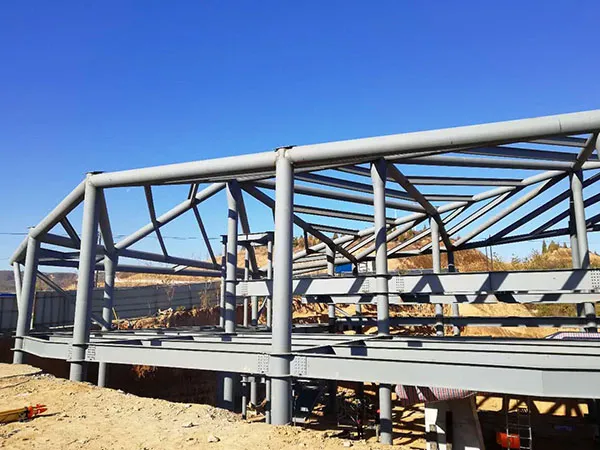
Shaanxi Yanchuan Qiankunwan Scenic Area Cableway Project
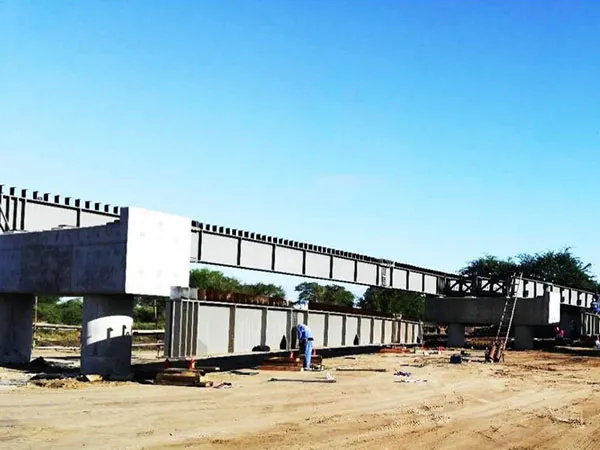
Mozambique Steel Bridge
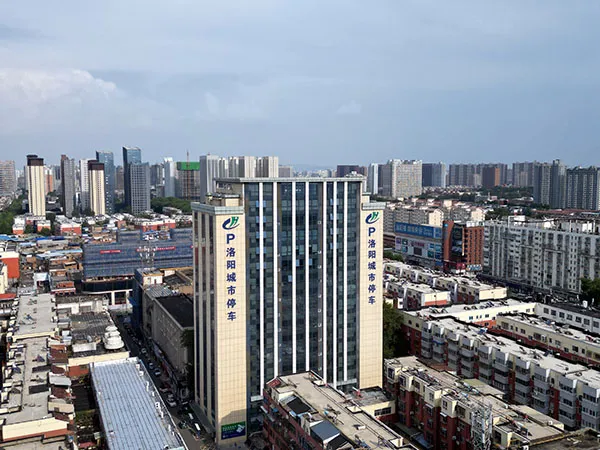
Steel Structure Car Park Project